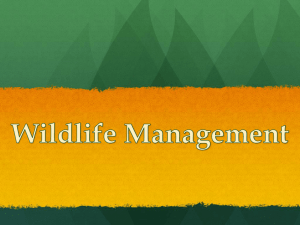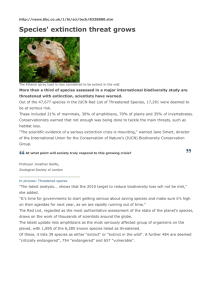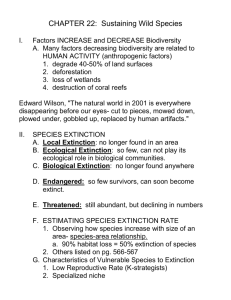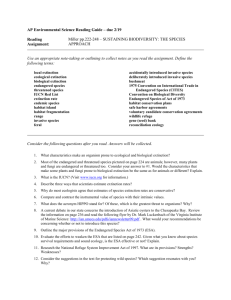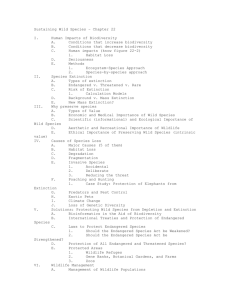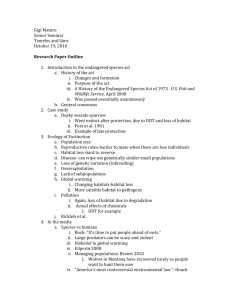Endangered Species Journal
advertisement
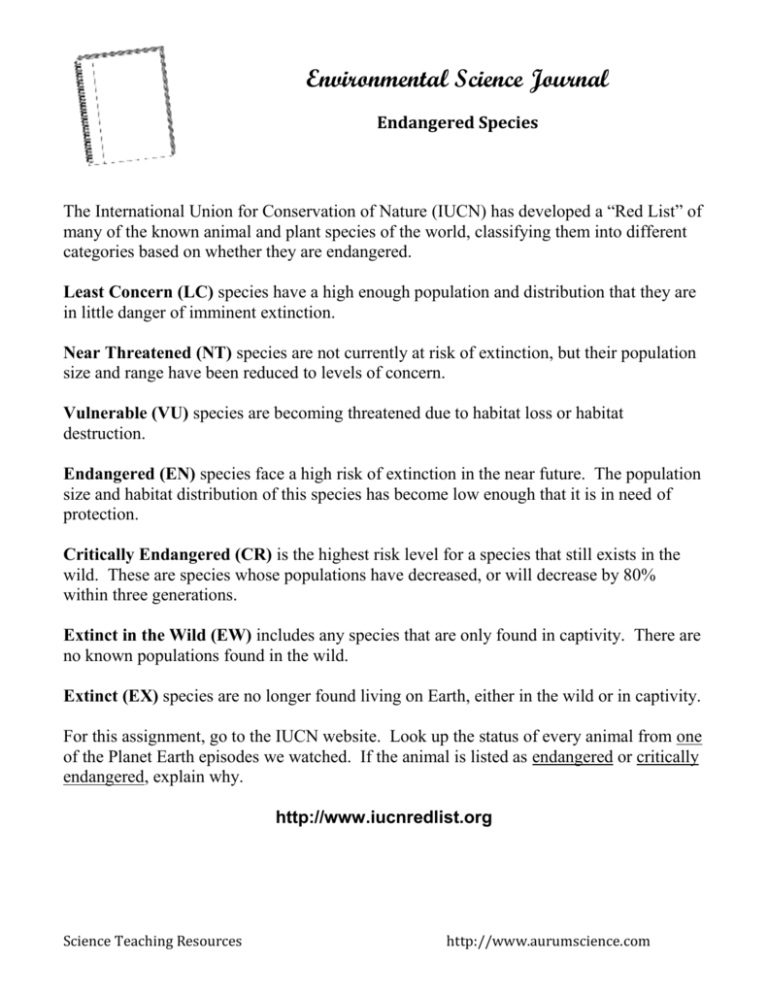
Environmental Science Journal Endangered Species The International Union for Conservation of Nature (IUCN) has developed a “Red List” of many of the known animal and plant species of the world, classifying them into different categories based on whether they are endangered. Least Concern (LC) species have a high enough population and distribution that they are in little danger of imminent extinction. Near Threatened (NT) species are not currently at risk of extinction, but their population size and range have been reduced to levels of concern. Vulnerable (VU) species are becoming threatened due to habitat loss or habitat destruction. Endangered (EN) species face a high risk of extinction in the near future. The population size and habitat distribution of this species has become low enough that it is in need of protection. Critically Endangered (CR) is the highest risk level for a species that still exists in the wild. These are species whose populations have decreased, or will decrease by 80% within three generations. Extinct in the Wild (EW) includes any species that are only found in captivity. There are no known populations found in the wild. Extinct (EX) species are no longer found living on Earth, either in the wild or in captivity. For this assignment, go to the IUCN website. Look up the status of every animal from one of the Planet Earth episodes we watched. If the animal is listed as endangered or critically endangered, explain why. http://www.iucnredlist.org Science Teaching Resources http://www.aurumscience.com

